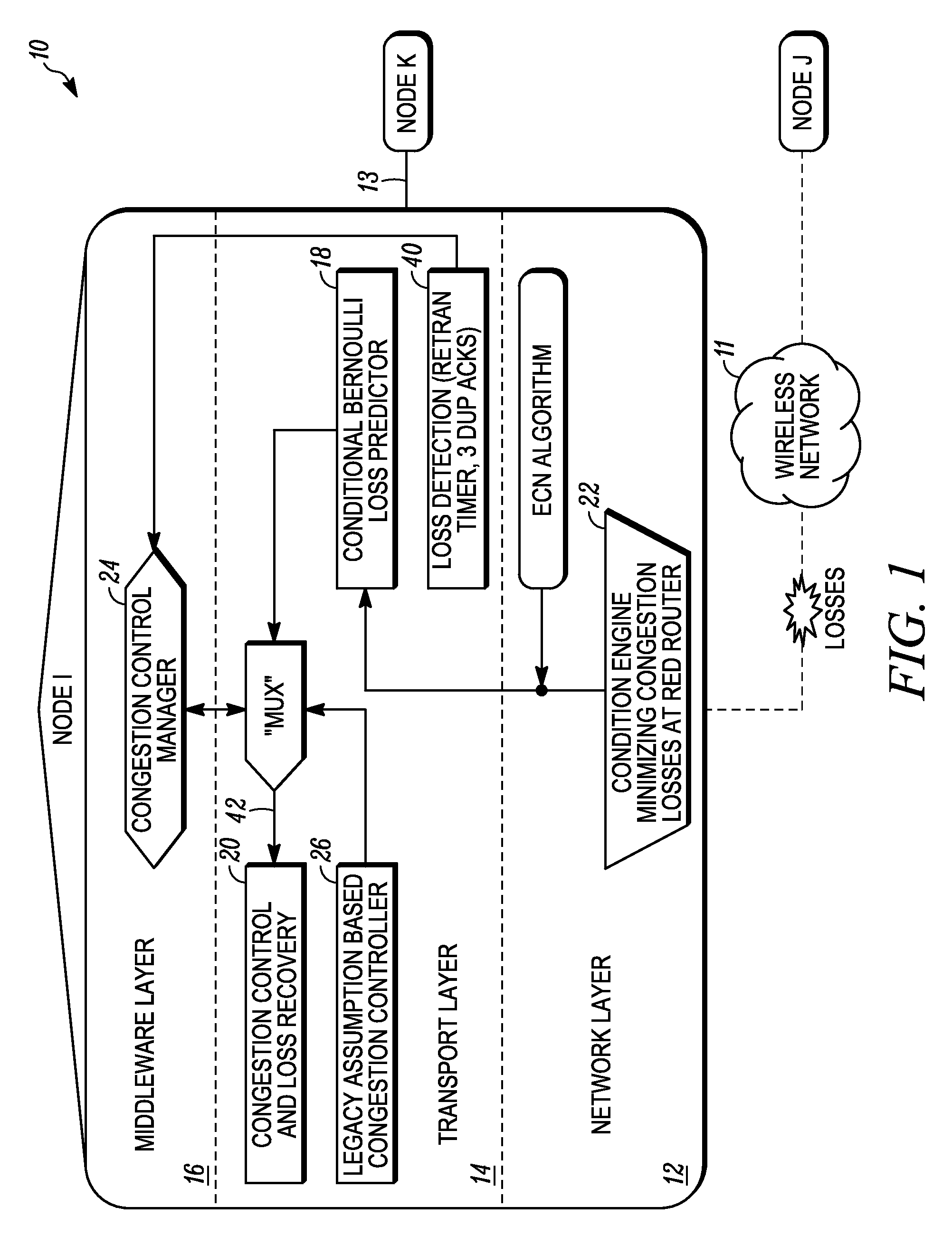Speculative congestion control system and cross-layer architecture for use in lossy computer networks
a technology of lossy computer networks and control systems, applied in the field of communication systems, can solve problems such as lossy links, dropped packets, and work against efficient data packet throughput, and achieve the effects of optimizing data recovery and throughput, and efficient data throughpu
- Summary
- Abstract
- Description
- Claims
- Application Information
AI Technical Summary
Benefits of technology
Problems solved by technology
Method used
Image
Examples
Embodiment Construction
[0014]The following detailed description of the invention is merely exemplary in nature and is not intended to limit the invention or the application and uses of the invention. Furthermore, there is no intention to be bound by any theory presented in the preceding background of the invention or the following detailed description of the invention.
[0015]To overcome the detriments of legacy congestion control systems when applied to lossy (e.g., wireless) links characterized by high error rates, the present invention has applied speculative techniques (i.e., speculating on the outcome of branch predictions) for throughput improvements when lossy links are involved in TCP / IP connections. The present invention eliminates the waste of bandwidth responding to link errors, using speculative techniques resulting in significantly improved network throughput.
[0016]Referring to FIG. 1, a single communication node 10 in accordance with an embodiment of the present invention is illustrated in blo...
PUM
 Login to View More
Login to View More Abstract
Description
Claims
Application Information
 Login to View More
Login to View More - R&D
- Intellectual Property
- Life Sciences
- Materials
- Tech Scout
- Unparalleled Data Quality
- Higher Quality Content
- 60% Fewer Hallucinations
Browse by: Latest US Patents, China's latest patents, Technical Efficacy Thesaurus, Application Domain, Technology Topic, Popular Technical Reports.
© 2025 PatSnap. All rights reserved.Legal|Privacy policy|Modern Slavery Act Transparency Statement|Sitemap|About US| Contact US: help@patsnap.com



